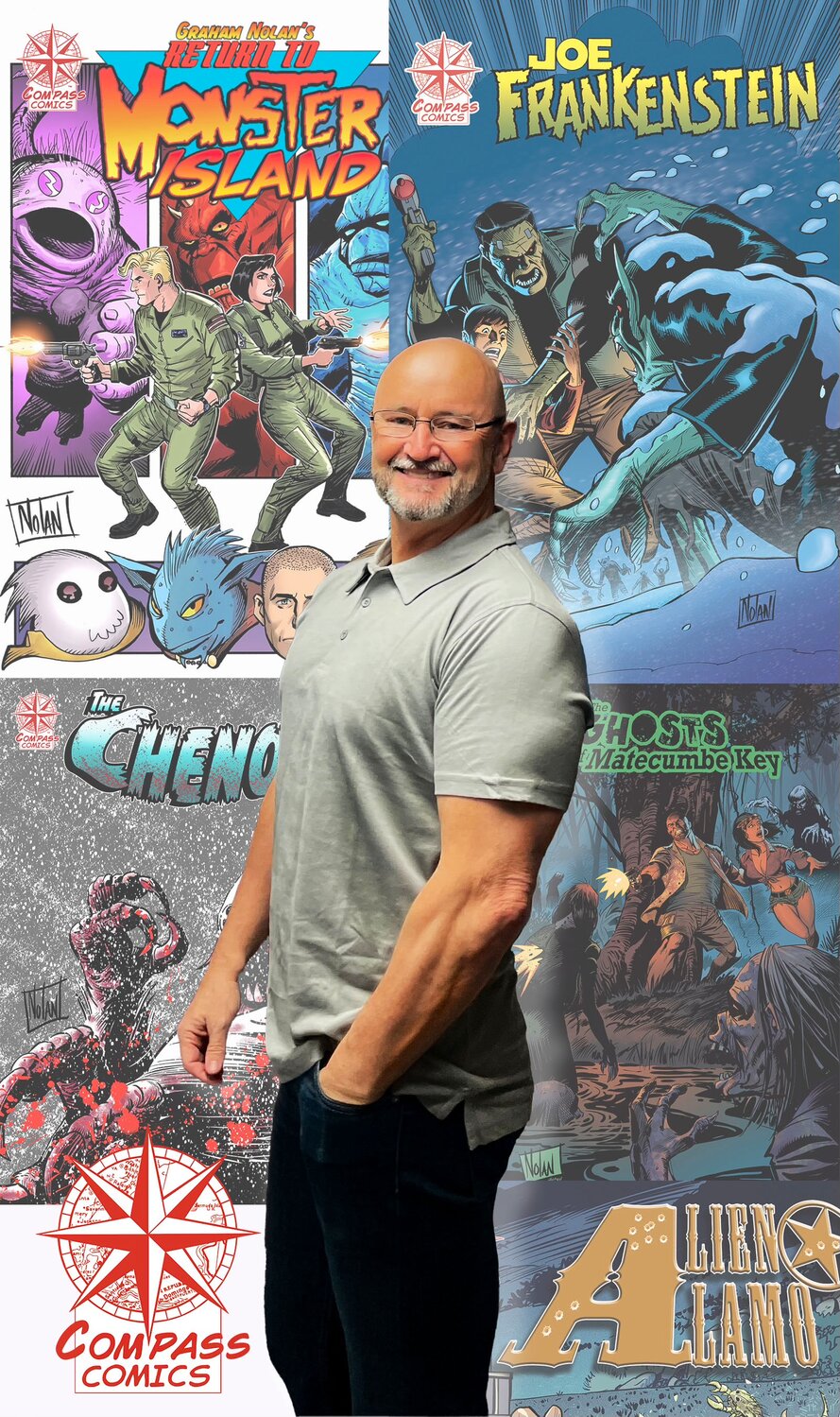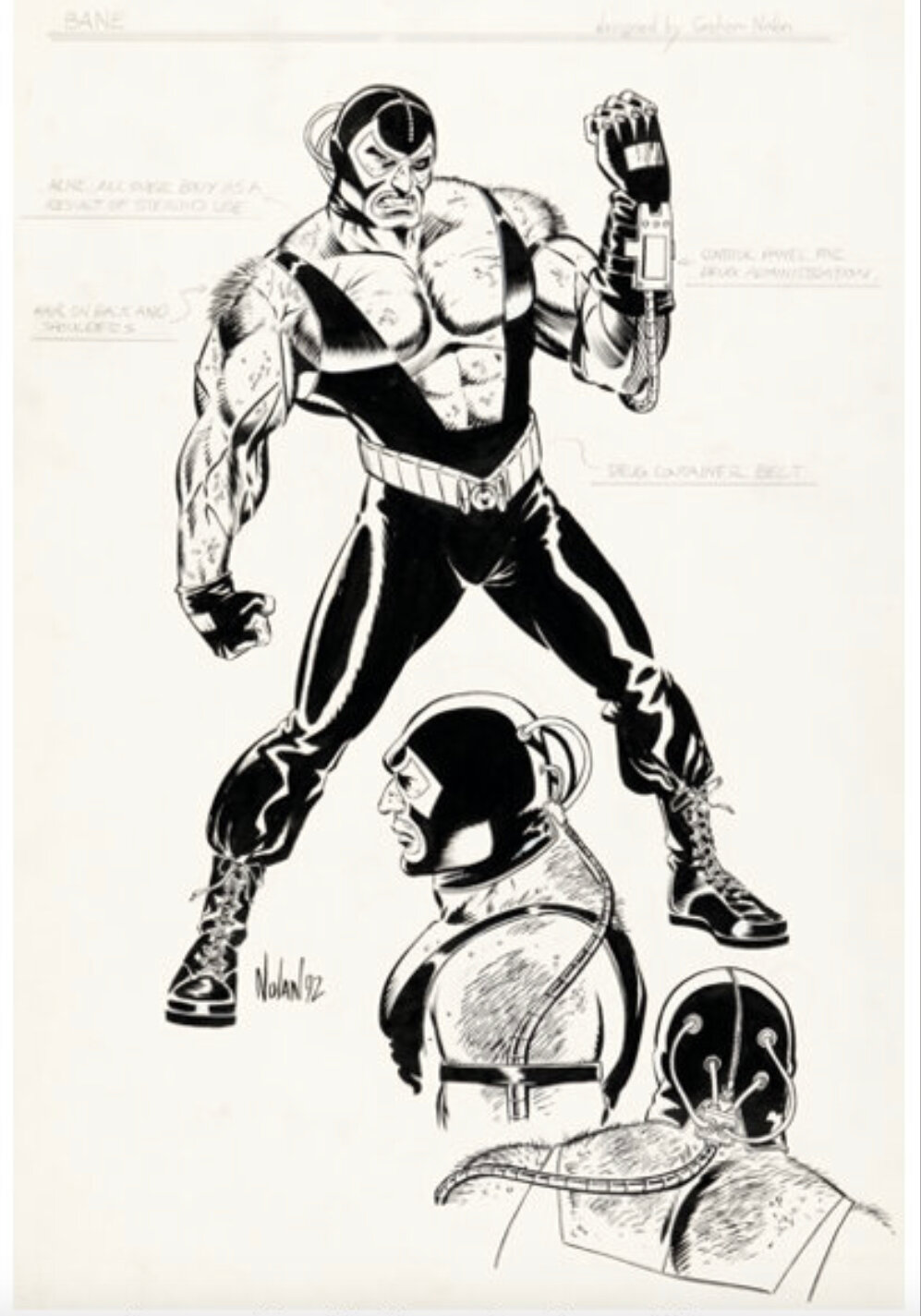He created a villain, the Bane of heroes
“No one cared who I was until I put on the mask.”
It’s an iconic line from an equally iconic comic book villain in the 2012 Batman film “The Dark Knight Rises.” But the mask-wearing Bane — played in the film by Tom Hardy — wouldn’t have existed if it weren’t for a Nolan.
Not Christopher Nolan, the director. Instead, the Long Beach native who co-created the brute some 30 years ago, Graham Nolan.
Nolan was born into a family in 1962 that had already been in Long Beach for decades. His grandfather Nicholas Leo was the city’s last police chief before it shifted to commissioners. His father, Leo, opened Nolan’s Pub on Park Avenue.
Growing up attending Lindell School, Nolan remembers one teacher in particular: Mr. Schneider. He recalled how during his first year teaching, Schneider did something that would not only make school more enjoyable, but would also set Nolan up for the rest of his life.
“He brought in a stack of comic books for the kids to read during recess,” Nolan said. “I latched onto this Justice League comic, thinking it was so cool. It lit a little light bulb over me.”
Nolan was always drawing, but he never knew what exactly to create. He used to draw anything, like one time a house was being built across the street from school. So, he looked out the school window and drew the house.
But when he discovered comics, Nolan immediately knew that’s what he wanted to do.
Nolan’s family moved out of Long Beach in 1974, landing on Florida’s Space Coast, specifically Indian Harbour Beach. He brought what he fell in love with from one beach to another, continuing to draw comic book-style art. He would copy the professionals — especially his favorite artist, John Romita Sr., who co-created Spider-Man sidekick Mary Jane Watson, and who died earlier this month.
When he got to Satellite High School in Satellite Beach, Nolan enrolled in advanced art classes. He continued those classes at nearby Brevard Community College — now known as Eastern Florida State College. He then enrolled in The Kubert School in New Jersey, which offers education in cartooning and graphic art.
“Joe Kubert is a legend,” Nolan said. “He’s one of the great comic book illustrators of all time, and he started this school back in 1976. So, I went up there, went to that school for a couple of years, and then I ran out of money. I could’ve gone back and finished, but I developed my skills enough that I could get small jobs and learn the rest.”
That school also gave Nolan his first professional artwork sale. One of his professors was an editor for DC Comics, editing the book “Talent Showcase.” The professor bought two of Nolan’s classroom projects, and published them.
Nolan would continue to work independently — as the business is primarily all freelance work — ultimately drawing for various companies like DC, Marvel and Eclipse Comics.
Eventually, comics became more and more violent. Two of the most popular characters at the time — Wolverine and the Punisher, both co-created by Romita — killed their enemies. Dennis O’Neill, the Batman editor at the time, was getting fan mail saying the Caped Crusader needed to start doing so as well. O’Neill wasn’t fond of the idea, and he wanted to prove to fans why. But he first needed a villain that would drive Batman to that point of life or death.
That villain became Bane.
Comic book writer Chuck Dixon had the idea the villain should be like an “evil Doc Savage,” a mid-1900s comic book character. Savage was an extremely smart person, and they wanted Bane to be the same.
“So that was the basic idea, that he was going to be super strong and super smart,” Nolan said. “He was also going to be raised in a prison for crimes his father committed, so he was completely innocent and basically turned into a monster by his environment.”
Designing Bane, Nolan looked at Mexican luchador masks and costumes as a model. He also gave the character military pants and boots, as well as a device on his arm that would automatically inject him with a steroid called “venom” that would make him even stronger. They couldn’t show needles because they weren’t allowed in comics at the time.
Bane made his debut in 1993, in “Batman: Vengeance of Bane, No. 1.”
Three decades later, some of Nolan’s original Bane artwork still exists, and is currently being auctioned by Heritage Comics. Some of the pieces already have bids for close to $7,000.
Bane has been remade numerous times in television and movies — both animated and live-action. Nolan isn’t a major fan of the renditions for the most part, since those creators took a lot of liberties when representing Bane.
“They don’t capture the character,” Nolan said of the remakes. “The first time he appeared in ‘Batman and Robin,’ he was just a big dummy. Then, in the (2012) movie, you think he’s a bright guy and you think he’s a mastermind, and then you get to the end and he’s just a lovesick puppy dog.”
To this day, Batman has yet to kill Bane. At least directly. Even as portrayed by Tom Hardy, Bane dies not at the hands of Christian Bale’s Batman, but instead by Anne Hathaway’s Catwoman.
Still, it is cool to see his character constantly brought back to life, and Nolan acknowledges Hollywood does change for movies and entertainment. He still wishes, though, they kept to his original 1990s character.
When asked how many tries it took for him to perfect his iconic comic book villain, Nolan’s reply was simple:
One.

 50.0°,
Overcast
50.0°,
Overcast 







